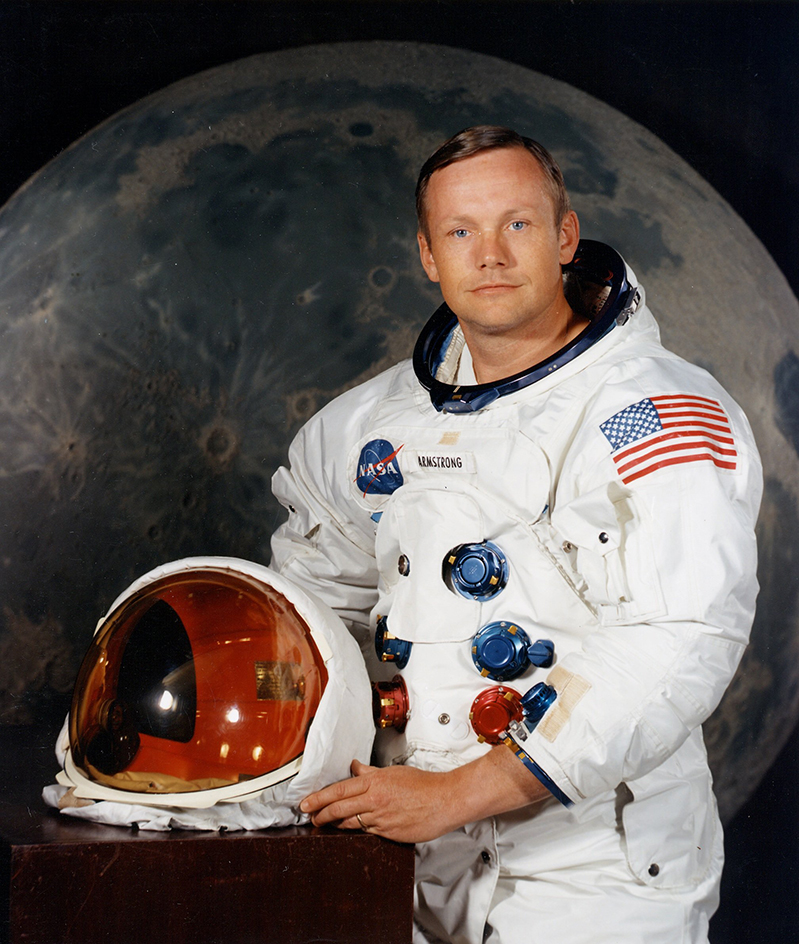Armstrong, Neil Alden (1930-2012), a United States astronaut, was the first person to set foot on the moon. On July 20, 1969, Armstrong and Buzz Aldrin landed the Apollo 11 lunar module Eagle on the moon. Armstrong, the mission commander, left the module and explored the lunar surface. Upon taking his first step onto the moon, he said: “That’s one small step for a man, one giant leap for mankind.” But the word a was lost in radio transmission.

Armstrong was born on Aug. 5, 1930, on his grandparents’ farm in Auglaize County, Ohio. He moved with his family to several Ohio communities before they settled in Wapakoneta when Neil was 13 years old. Armstrong developed an interest in flying at an early age. His love of airplanes grew when he went for his first plane ride in a Ford Tri-Motor, a “Tin Goose,” at the age of 6. From then on, he was fascinated by aviation.
In 1947, Armstrong entered Purdue University. He began studies in aeronautical engineering. But in 1949, the United States Navy called him to active duty. Armstrong became a Navy pilot and was sent to Korea in 1950, near the start of the Korean War. In Korea, he flew 78 combat missions in Navy Panther jets.
In 1952, Armstrong returned to Purdue. He earned a bachelor’s degree in aeronautical engineering there in 1955.
Armstrong was a civilian test pilot assigned to test the X-15 rocket airplane before becoming an astronaut in 1962. He made his first space flight in 1966 on Gemini 8 with David R. Scott. The two men performed the first successful docking of two vehicles in space—the Gemini 8 and an uninhabited Agena rocket.
Loading the player...Space exploration: Apollo 11
Armstrong resigned from the United States astronaut program in 1970. Also in 1970, he earned a master’s degree in aerospace engineering at the University of Southern California. From 1971 to 1979, Armstrong was a professor of aerospace engineering at the University of Cincinnati. In 1986, he was named vice chairman of a presidential commission investigating the breakup of the space shuttle Challenger (see Challenger disaster). From 1982 to 1992, Armstrong served as chairman of the board of Computing Technologies for Aviation, a company that develops software for flight scheduling. Armstrong died on Aug. 25, 2012. 
